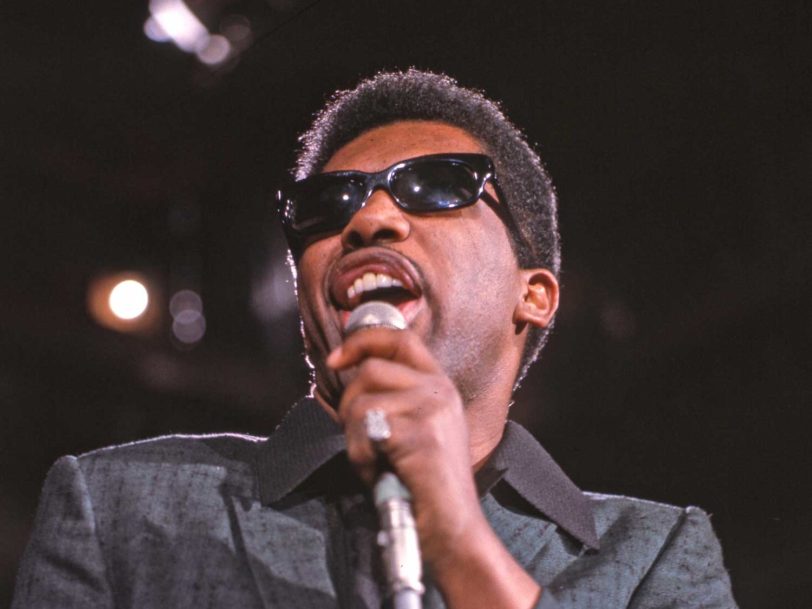Ben E King never entirely defined the music he sang in his 1966 hit What Is Soul?, but if he had, one of the qualities he might have cited was elegance. King’s work was full of it. That especially applies to Spanish Harlem, the beautiful beat ballad which launched his solo career when it was released in 1960. Stately, emotional, replete with the romantic dreams of its day, the song has resonated ever since, retaining all its subtle allure. Spanish Harlem made Ben E King a star – but the record’s brilliance was not immediately appreciated by the label that released it.
Ben E’s last dance
Ben E King (born, on 28 September 1938, Benjamin Earl Nelson) had already experienced fame as the lead singer in The Drifters, fronting the hits Dance With Me, There Goes My Baby, This Magic Moment and Save The Last Dance For Me across 1958-1960. Such success was no mean feat, because fans of the group already considered its previous frontman, Clyde McPhatter, worthy of godlike status. The Drifters proved even more popular during King’s tenure, but there was dissent among its ranks. Multiple line-up changes, beefs with the group’s management about money, and problems with booze in some instances, made membership of this accomplished vocal quartet a revolving door. Ben E King lasted two years with The Drifters before quitting to sign a solo deal with the group’s label, Atlantic.
The skilled, highly soulful singer conjured the recipe for solo success at his first attempt with Spanish Harlem, released on 1 December 1960. The problem was, it was intended as the B-side to the First Taste Of Love, a light pop confection in the mould of several previous Drifters’ hits. But sometimes the most obvious option is not the best: US radio DJs quickly elected to play Spanish Harlem instead. First Taste Of Love stalled before breaking into the US Top 50, but Spanish Harlem crashed into the Top 10.
Backroom legends
The song was written by Jerry Leiber and Phil Spector, and produced by Leiber and Mike Stoller, who’d created hits for Elvis Presley and The Coasters, as well as the Ben E King-led incarnation of The Drifters. Stoller improvised Spanish Harlem’s vitally important hook on the piano as they presented the song to Atlantic Records supremos Ahmet Ertegun and Jerry Wexler. This became the descending marimba figure on the finished record, adding a cute “exotic” touch. Spector played guitar on the session; he’d been shadowing Leiber and Stoller while learning his trade as a songwriter and producer. Jerry Leiber saw the future legend (and eventual convicted murderer) as irritatingly overeager, but worked with him at the request of their publisher, who recognised Spector’s raw talent but figured he needed experience. Leiber had the initial idea for a song set in the Latin area of Harlem, New York – actually East Harlem – and eased Spector into the mood by playing him records of classical Spanish guitarists.
By the standards of pre-Beatles rock, the lyric was subtle. Leiber doesn’t make the longing the song’s protagonist feels explicit until the second verse, keeping it, as the lyric puts it, “soft and sweet and dreaming”. This entirely suited the record’s warm, mildly Latin feel, and proved perfect for the vocals. King didn’t oversell the song; he was disclosing his affection as much as declaring it. The arrangement is understated and full of possibilities, emphasising the intimacy of King’s confession until, after a couple of verses, the orchestra sweeps in to represent the romantic dreams the singer has conjured. The era’s ideals of passion in one of the poorer quarters of Manhattan could not have been better evoked.
Still a rose
Spanish Harlem became a US hit in 1961. Inevitably, a Spanish Harlem album followed, full of Iberian and Latin-influenced melodies (Quando Quando Quando, Souvenir Of Mexico, etc), before King cemented his place in rock history later that year with his anthem, Stand By Me. But Spanish Harlem was far from done. The song became a tapas buffet. In the 60s, it was consumed by British pop mainstay Cliff Richard, easy listening maestros Santo & Johnny, R&B sax star King Curtis, toe-tapping trumpeter Herb Alpert, psych vocal group The Mamas & The Papas, panties magnet Tom Jones and reggae saxman Val Bennett, among many others. But Spanish Harlem lacked an interpretation to make it contemporary again until Aretha Franklin’s transcendent cover in 1971.
With a couple of subtle amendments to the lyrics to make it fit the identity and gender politics of the era, Aretha claimed Spanish Harlem for the 70s, hitting No.2 in the US. With pleasing symmetry, this version was co-produced by Jerry Wexler, who’d auditioned the song for Ben E King’s recording 11 years previously. Spanish Harlem remains a pop standard, with further explorations by cult fusion flautist Bobbi Humphrey, reggae singers Delroy Williams and Slim Smith, and a reverent take by Laura Nyro And Labelle, which remembered the song suited an elegant arrangement. Yet the definitive cuts belong to Ben E King and Aretha. The rose in Spanish Harlem still grows proud and beautiful, every time you hear their remarkable versions.
More Like This
Vogue: The Story Behind Madonna’s Most Celebrated Video
As iconic as it gets, the promo video for Madonna’s Vogue single proved that the “Queen Of Pop” was all about making high art.
What’s Love Got To Do With It: Behind Tina Turner’s Universally Adored Anthem
A true 80s mega-hit, What’s Love Got To Do With It defined Tina Turner’s career, if not her outlook on life…
Be the first to know
Stay up-to-date with the latest music news, new releases, special offers and other discounts!




